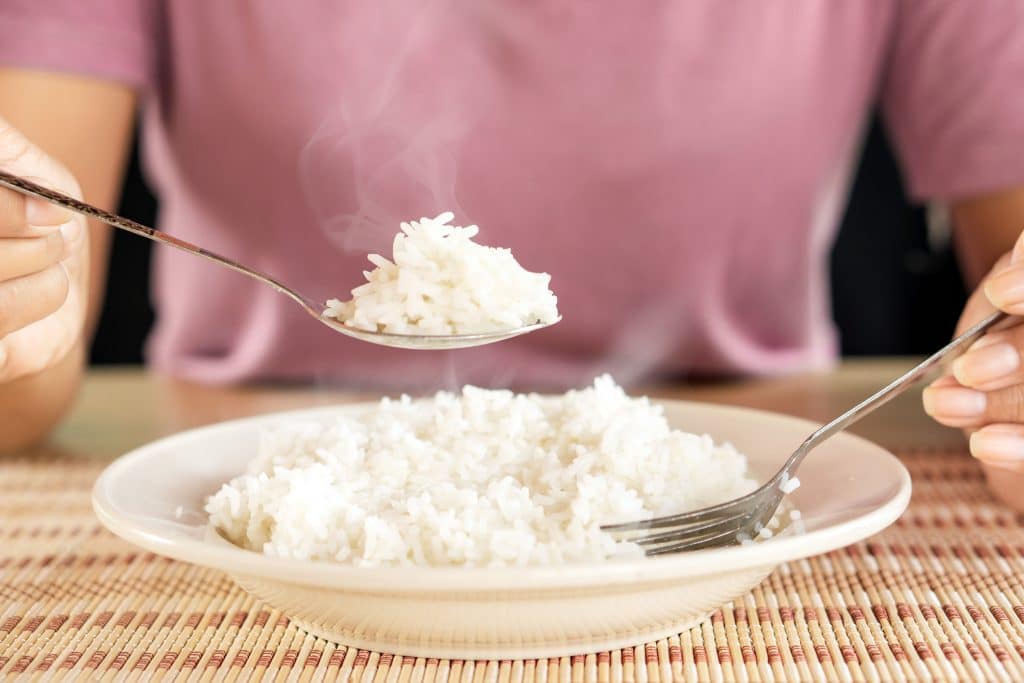Rice is a staple in everyday cooking. However, it often turns out sticky, too dry, or lacking in flavor. If you’ve ever struggled with cooking rice, rest assured, you’re not alone. So, how can you achieve perfectly fluffy, light, and flavorful rice without having to monitor the pot constantly?
There is an infallible method that ensures perfectly cooked rice every time. Regardless of the variety—basmati, Thai, jasmine, or brown rice—certain key steps can enhance its cooking. Rinsing, water quantity, and cooking method: every detail matters. Here’s how to succeed at cooking rice every time.
Rinsing the rice : a crucial step that many forget
One of the biggest mistakes when preparing rice is neglecting to rinse it. However, this step is essential for achieving the perfect texture.
Indeed, rice naturally has a coating of starch. When it comes into contact with hot water during cooking, this starch forms a sticky paste. If you want distinctly separated and fluffy grains, it’s imperative to eliminate the excess starch before cooking.
How to do this? It’s quite simple:
- Place the rice in a large bowl or a strainer.
- Add cold water and gently mix with your hands to detach the starch.
- Drain the cloudy water and repeat the process at least three times, until the water is almost clear.
Besides removing the starch, rinsing also helps eliminate any impurities. It’s an essential step for healthier rice and controlled cooking.
The right amount of water: a visual trick to never get it wrong
One of the most common mistakes when cooking rice is using too much or too little water. Too much water makes it mushy, while too little leaves it hard and undercooked. So, how can you perfectly gauge the amount of water?
There’s a simple and 100% fail-proof trick: the fingertip method.
- Place your rinsed rice in a pot.
- Add cold water until it reaches half a fingertip when you lightly dip your index finger to the surface of the rice.
- If using a wide pot, slightly adjust the amount to prevent excess water.
This method works regardless of the type of rice used, without needing to pull out scales or precisely measure the water and rice volumes.
A slow and controlled cook: the key to success
The cooking stage is just as important as rinsing and measuring the water. It’s not enough to throw rice in a pot and hope it cooks perfectly by itself.
Here’s how to proceed for a successful cook:
- Bring the water to a boil over medium heat.
- Once boiling, reduce to very low heat and cover the pot with a lid.
- Do not touch anything and let it cook until all the water is absorbed.
This process allows the rice to slowly absorb moisture, resulting in a light and fluffy texture. Do not lift the lid during cooking, as the steam plays a crucial role in evenly cooking the grains.
Finally, once all the water is absorbed, remove the pot from the heat and let the rice sit covered for 5 to 10 minutes. This final resting time allows the grains to finish cooking gently, achieving the ideal texture.
Never stir during cooking: a fatal mistake
A common reflex when cooking rice is to want to stir it during cooking. Wrong! Stirring the rice while it cooks disrupts the heat distribution and could crush the grains, making them sticky.
If you follow the previous steps precisely, there is no need to intervene: the rice cooks perfectly without needing to touch it.
Cooking tailored to the type of rice
All these steps work for most types of white rice (basmati, Thai, jasmine, etc.), but certain varieties require a few adjustments:
- Brown rice: It has more fiber and requires a longer cooking time and a bit more water. Plan for about 45 minutes of cooking and double the volume of water compared to white rice.
- Sticky rice: Traditionally used in Asian cuisine, it must be soaked in cold water for several hours before steaming.
- Arborio rice (risotto): Unlike other varieties, it cooks gradually with water being added slowly to achieve a creamy texture.
The ultimate secret: a final fork fluffing before serving
After cooking and resting, there’s one last step to elevate your rice: fluffing it.
Take a fork and gently separate the grains before serving. This prevents them from clumping together and ensures a light, perfect texture.
With these tips, you will never fail at cooking rice again. Simple, effective, and foolproof!


